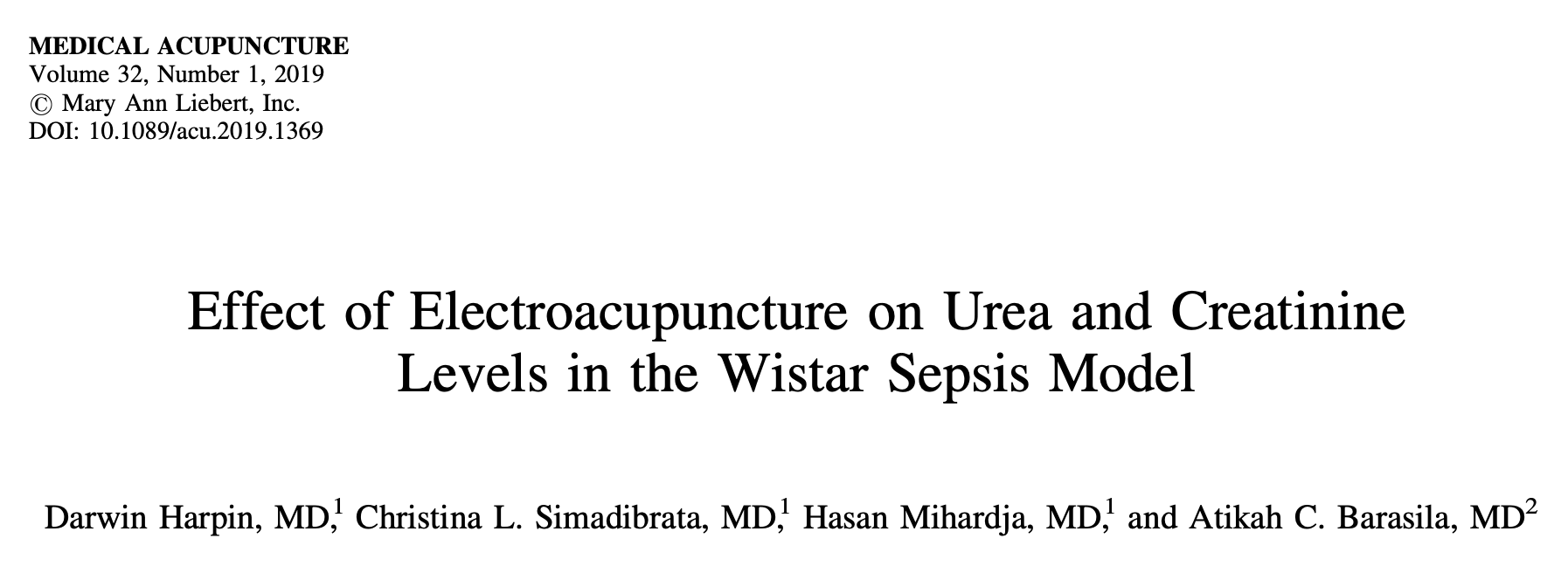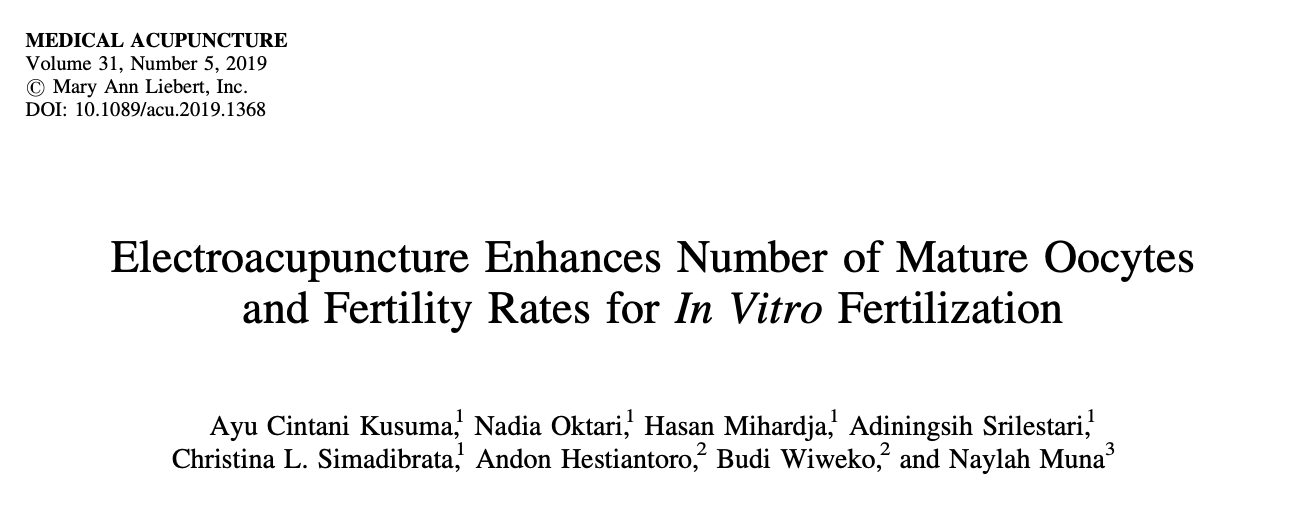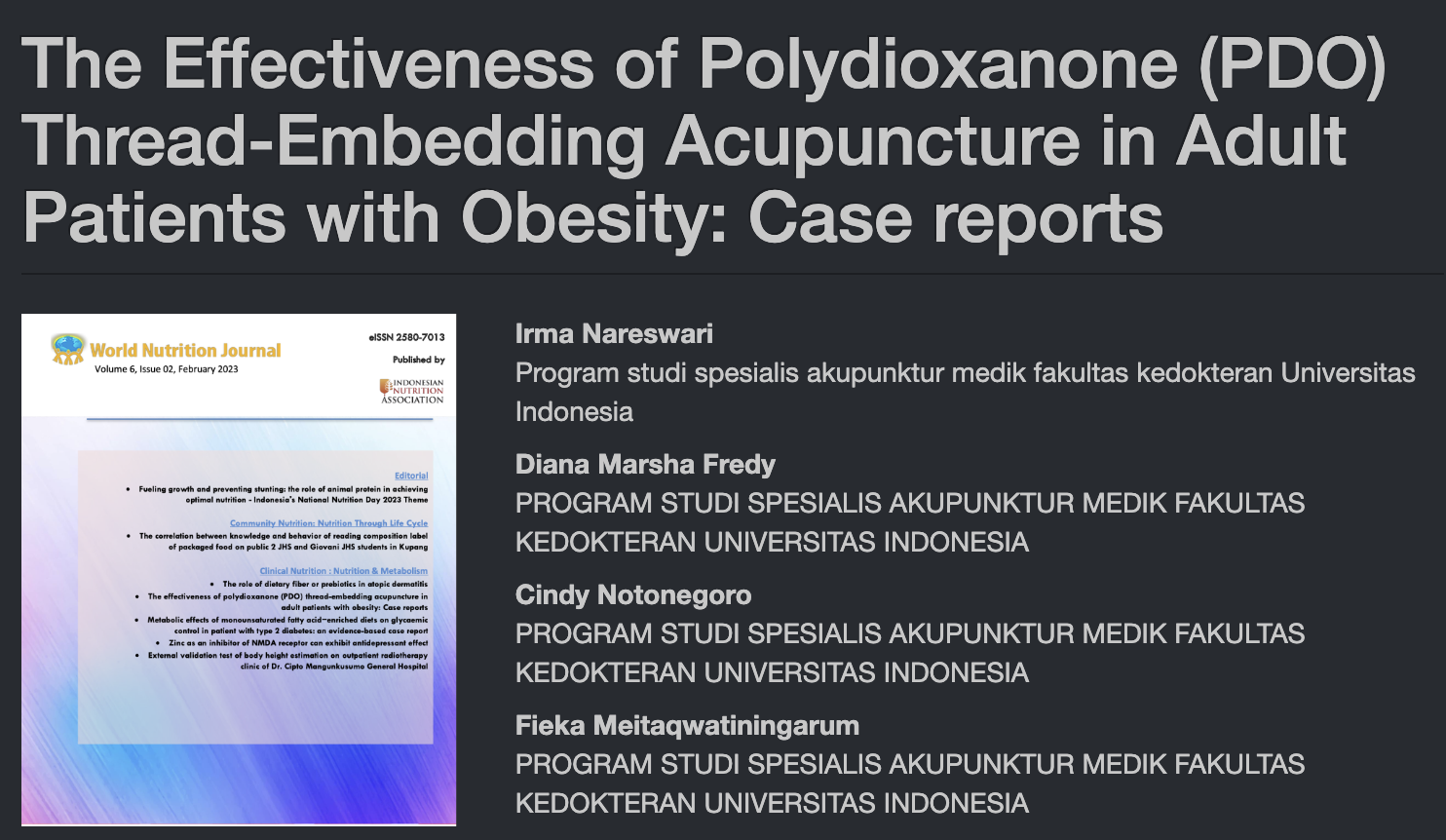- 07 January 2023
- Kesehatan
Effect of Electroacupuncture on Urea and Creatinine Levels in the Wistar Sepsis Model
MEDICAL ACUPUNCTURE
Volume 32, Number 1, 2019
© Mary Ann Liebert, Inc.
DOI: 10.1089/acu.2019.1369
Effect of Electroacupuncture on Urea and Creatinine Levels in the Wistar Sepsis Model
Darwin Harpin, MD,1 Christina L. Simadibrata, MD,1 Hasan Mihardja, MD,1 and Atikah C. Barasila, MD2
ABSTRACT
Objective: Sepsis is a life-threatening organ dysfunction caused by dysregulation of a host’s response to infections. Sepsis—one of the most common contributing factors to acute kidney injuries in critically ill patients is caused by bacterial endotoxins that lead to excessive production of proinflammatory cytokines. This condition can be treated with few side-effects by using electroacupuncture (EA) to regulate the neuroendocrine immune system to control the production of these cytokines. A number of studies have proven that EA stimulates the vagus nerve to manage inflammatory responses through the cholinergic pathway, slowing sepsis. This study was conducted to investigate the effect of bilateral EA at ST 36 (Zusanli) on rats’ renal function by measuring their levels of plasma urea and creatinine.
Materials and Methods: This study was a randomized, double-blinded, laboratory experimental post-test, with both subjects and laboratory investigators blinded. Twenty-eight male Wistar rats were divided randomly into 4 groups of 7 rats each: (1) a control group; (2) a sepsis group; (3) an EA+group; and (4) a sham EA+group. EA and sham EA was applied once for 30 minutes before intraperitoneal administration of live Eschericia coli bacteria ATCC 25922. Six hours after administration of the bacteria the rats’ plasma urea and creatinine levels were measured.
Results: There was a statistically significant difference in the mean levels of urea (P<0.001, 95% confidence interval (CI): 57.1-76.6) and creatinine (P=0.005, 95% CI: 0.14—0.62) between the sepsis and control groups.
Conclusions: These findings suggest that EA pretreatment at ST 36 attenuated the induced inflammatory bacteria response and mitigated acute kidney injury.
Keywords: electroacupuncture, sepsis, anti-inflammation, acupuncture, renal function, acute kidney injury
INTRODUCTION
SEPSIS IS A LIFE THREATENING organ dysfunction caused by dysregulation of a host’s response to infections.1,2 The most-common cause of sepsis is an infection of gram-negative or gram-positive bacteria. It is known that sepsis causes disruption of organ function through inflammatory mechanisms at the molecular, cellular, and organ levels.3
As of 2016, the number of patients with sepsis in the world was estimated to reach more than 30 million annually, with deaths reaching up to 6 million patients.4 In 1999, from the identified 92 cases of sepsis in Dr. Cipto Mangunkusumo National Hospital (RSCM), the mortality rate reached 78.3% and, in 2000, it increased to 160 cases with a mortality rate of 84.4%.5 In 2013, data from RSCM’s medical record showed that the mortality rate due to sepsis was 28%.6
Endotoxin or lipopolysaccharide bacteria is known as a potent mediator microbe in pathogenesis implication of sepsis. This induces the production of proinflammatory cytokines (i.e., tumor necrosis factor-α [TNF-α] and interleukin{IL]-6).
1Medical Department of Acupuncture, and "Department of Histology, Dr. Cipto Mangunkusumo National General Hospital, Faculty of Medicine, Universitas Indonesia, Central Jakarta, Indonesia.





